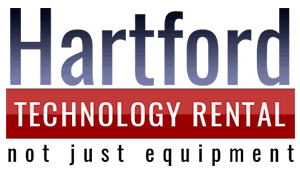We asked Microsoft How to get started developing HoloLens 2 apps (this is what they said)
With the introduction of the Microsoft HoloLens 2 Development Edition we would like to share a guide to help HoloLens developers take advantage of this groundbreaking mixed reality headset. It’s not often that a device is released that lands at the crossroads of cutting edge technology and nearly unlimited possibility. But that is exactly the device you get with the Microsoft HoloLens 2. Limited only by the imagination of the developers who will create the applications to use with this headset, the HoloLens 2 is the realization of what was previously merely science fiction. It’s Star Wars meets Minority Report!
Such a groundbreaking device can leave many questions unanswered. So to help you quickly discover the intersection between what does Microsoft have to offer vs. what are the needs of the developer community, we interviewed some of the experts behind Microsoft’s HoloLens 2 to speed up your learning curve.
Our panel includes the following Microsoft executives, including a Ninja:




According to Jean Blatchford, “when a developer has an opportunity to physically experience the HoloLens they will often change what they are doing and creating and switch to becoming a mixed reality HoloLens developer. There is a huge shift that happens after a user tries on the device and experiences what it can actually do.”
What type of industries are adopting mixed reality software?
Eric Kamont lists the following industries in order that have had the most success and earliest adoption:
Manufacturing – in terms of scale, most significant and most early success. High AR adoption with 3D models and 3D CAD already being widely used. AR is the next step in the evolution of the technology.
Healthcare/Medical – there are many interesting developments with MRI integration but not a lot of scale
AEC (Architecture, Engineering, Construction) – early days of the technology adoption process
Education – 13+ because of headset weight restriction but generally much more at the college level
Public Sector with emphasis on defense and intelligence
Retail – stalled with the pandemic but an expected resurgence going in to 2021 and beyond
Sean Kerawala was kind enough to research and provide multiple links which will be shared throughout this document. Let’s start with a list of industries served including manufacturing, healthcare and education.
What HoloLens 2 features are developers most excited about?
Before we share some of the resources that are available to developers, for fun we asked the Microsoft team what they personally thought were the coolest features of the HoloLens 2.
Jean – “Ability to use your eyes to sign in. It is incredible to use iris authentication. This really feels like the future. Also hand tracking and facial recognition are very useful tools.”
Desiree – “Dude it makes holograms! That’s it! You don’t have to get any more complicated than that. It makes rich, solid feeling holograms where my first time going through the Guides demo I was walking around and wanted to touch everything. You know it’s not there but you just want to touch it! That’s the coolest feature….it freakin’ makes holograms!”
Eric – “It works in microgravity and in space. We have these working on the Space Station. Holograms work upside down and floating around. That’s badass! The most compelling thing is that it doesn’t matter who you are. You can be the CEO of a company or literally the Harley Davidson driving welder who hates smartphones and doesn’t use an ATM. Every single time you put it on their face they all become a 7 year old kid and go “WOW!” I have never had one single person in 5.5 years go “meh, it’s s***.” NEVER. We demoed it with a famous, internationally known billionaire casino owner. He was sitting there smoking a cigar and he put it on and he giggled.”
Desiree – “This is a huge part of what motivates developers in general. Seeing someone get that much joy and excitement from something that you have created. Knowing that you have created something that is making people more productive or that you have solved a problem…nothing creates that visualized moment so much as when someone puts on a HoloLens for the first time.”
Insider Preview Builds offer great insight into highly requested features that Microsoft has built.
The capabilities that are enabled through the Mixed Reality Toolkit (available for Unity and Unreal) are enabling developers to build the experiences of the future.
Developers can start their journey here. Microsoft tutorials outline the key capabilities of the HoloLens 2. Azure mixed reality services such as Azure Remote Rendering and Azure Spatial Anchors are also helping developers build compelling immersive experiences.
What is the learning curve for a HoloLens 2 developer?
Eric – “It has definitely gotten better from the first HoloLens to the HoloLens 2. You want the learning curve to be the application, not the device. It’s like the equivalent of taking the iPhone when it first came out and handing it to your grandmother and she says “what the heck am I supposed to do with this?” When HoloLens 1 came out we were encumbered by a fit and interaction model and many other things. You had to do a 15 minute brief to figure out how to use it. When HoloLens 2 came out we hand them the device and they put it on and they get it right away. The hand tracking actually operates very well. The usability went up by a factor of 10. The only issue we see if that when people are not used to the technology they do not move around, they stand still. Part of the beauty of holograms is walking around and engaging with the models. But the real learning curve comes from the individual applications, not from the device.”
Desiree – “Many folks are using a game engines. So you will find a lot of developers migrating from the gaming industry. If you are a typical enterprise developer that is probably not your area of expertise, but there are many good docs and tutorials available to help developers as well as tools like the Mixed Reality Toolkit for Unity and Unreal”
Developing in Mixed Reality is cutting edge, but Microsoft offers the guides, tutorials and resources to minimize the friction via their documentation.
It is also possible for Developers to rent a device before buying a HoloLens 2 device at full price. (checkout the Try Before You Buy Program from Hartford Technology Rentals).
What development platforms are available to the Microsoft HoloLens developers?
Unity, Unreal, Javascript and Native (OpenXR) are some of the most highly available development platforms that exist for HoloLens 2 development today. Check out Install The Tools documentation to see the available/required tools, development engines and mixed reality toolkits (MRTK).
Are there any sites/blogs/influencers you recommend bookmarking/following?
Jean – Rene Schulte is a Microsoft MVP and he works for Velorem. He is always on the cutting edge and pressing the envelope of what is possible.
Alex Kipman – Chief Crazy Officer and inventor of the HoloLens.
Forrester Research – JP Gownder
The Mixed Reality Community page details Online and Local communities as well as the Microsoft Mixed Reality Developer Ecosystem teams along with Microsoft MVPs.
What is the Microsoft Mixed Reality Developer program?
When you join the Microsoft Mixed Reality Developer Program you will receive the latest mixed reality updates, listing of events and early access to other offers.
Are there any must-attend events for either new and/or experienced HoloLens developers?
According to Desiree Lockwood, “Microsoft has been growing our Microsoft HoloLens and Mixed Reality Meetup by featuring a variety of guests and topics. In addition, Microsoft Mixed Reality Dev Days are a great place for comprehensive information and updates.”
You can check out the latest updates for Microsoft Mixed Reality Events and keep an eye out for Mixed Reality Dev Days.
Can you recommend any groups or forums that might be helpful to join?
Jean responds, “The hardware business is extremely difficult to get into. We applaud other companies taking the leap to come out with new mixed reality products. The more that the public and the business community is exposed to other companies the more confidence that grows about the technology in general. We view this as the next wave of computing. If Microsoft were the only player in the space then people would question the viability. So we feel like all ships rise with the tide. The more competition in the marketplace the better. We anticipate companies like Facebook and Apple will be coming out with products soon and we look forward to the ideas that they will introduce. It will be good for the industry. We look forward to broad adoption of mixed reality.”
How can developers get early access to the latest HoloLens releases and information to stay current?
The Insider Preview For Microsoft HoloLens provides an early preview of upcoming features on the headset. The HoloLens 2 Release Notes offers details retroactively on release features, bugs and security updates.
The HoloLens 2 Try Before You Buy Developer Program
Finally, Jean Blatchford has this to say about how you can try a Hololens 2, “Most developers are looking for a way to try the device before making a purchase. We didn’t have a way to do that through Microsoft so we engaged Hartford Technology Rentals as our rental partner. Now when a developer is looking for a short term solution, say a couple of weeks or a month, we have a cost efficient way for them to be introduced to the product.”
For more information on the HoloLens 2 Try Before You Buy Program, call us at 888-520-5667 or find us on the internet at www.hartfordrents.com.


